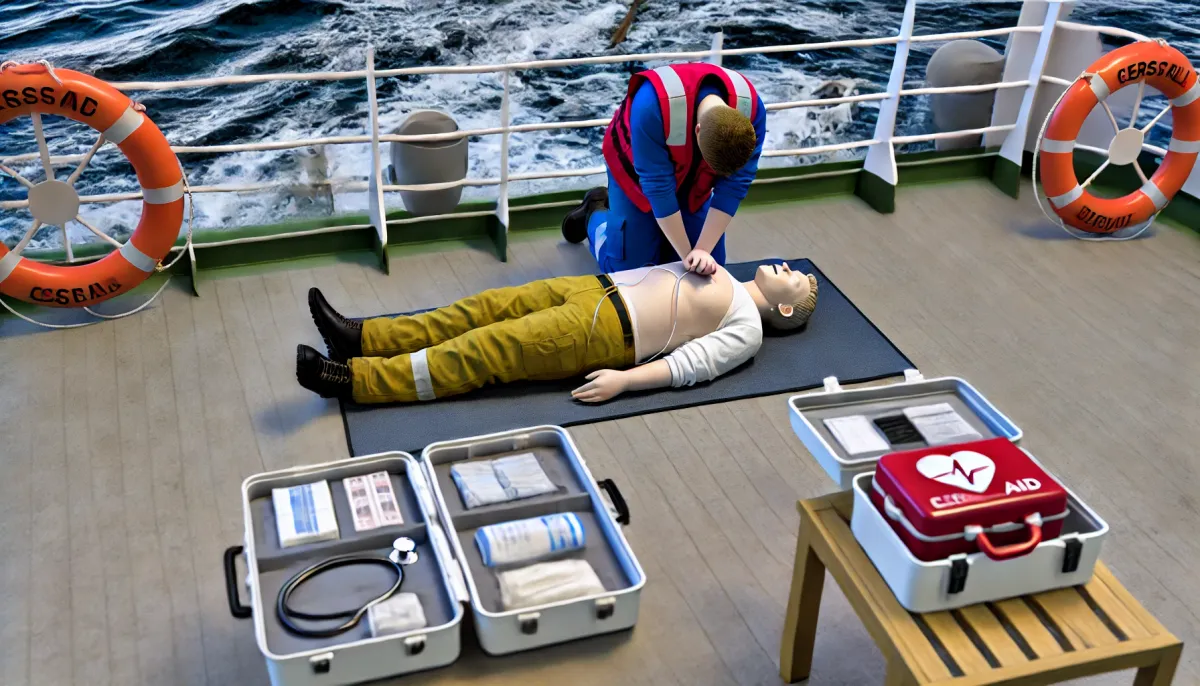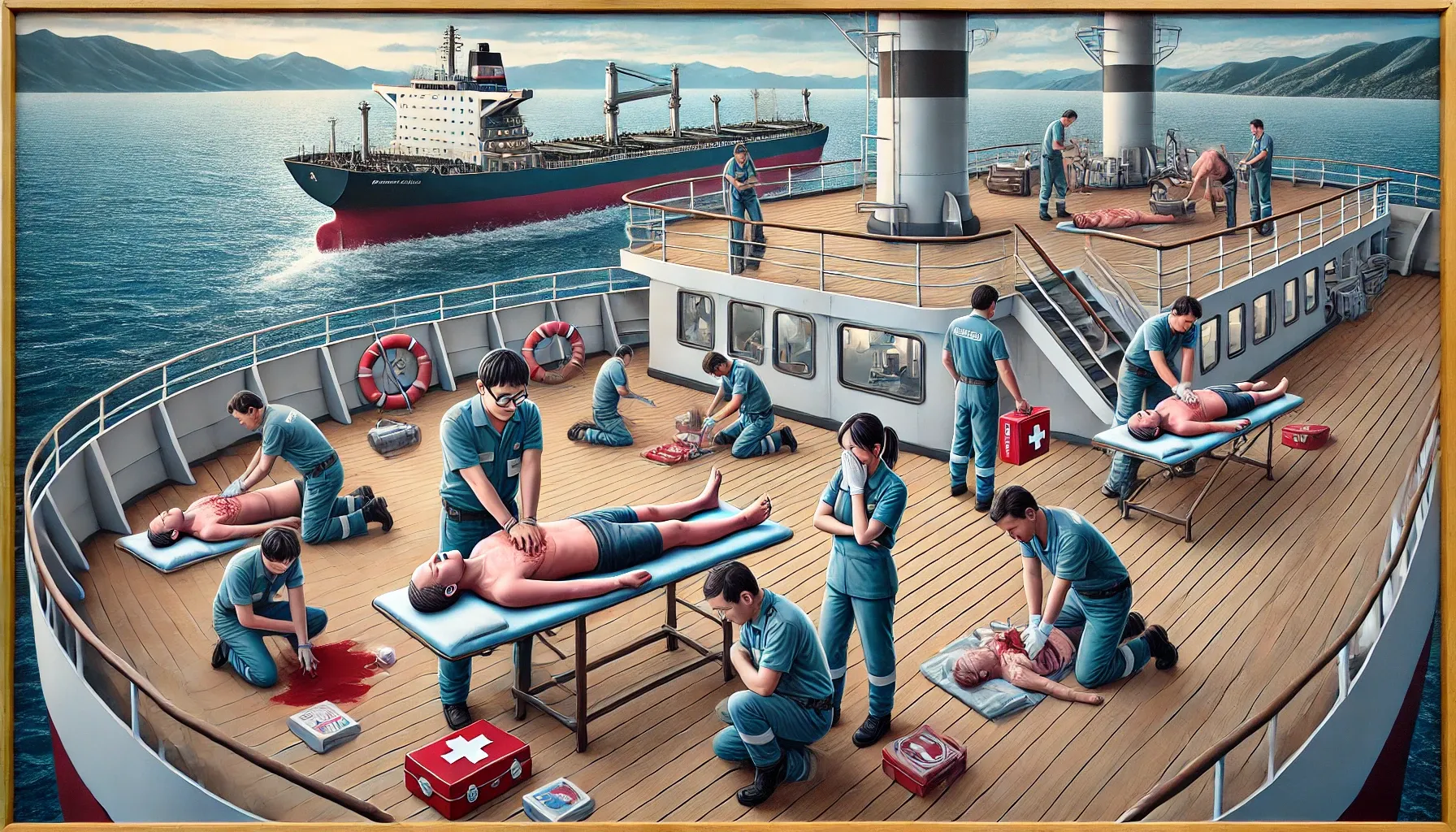The General Principles of Emergency First Aid: A Lifesaver’s Guide
In this blog series on Elementary First Aid, we revisit crucial concepts to help the maritime community act swiftly and effectively in emergencies, potentially saving lives.

Remember, Safety First
In the critical moments following an accident or sudden illness, the importance of immediate and effective first aid cannot be overstated. Emergency first aid aims to save lives by ensuring the victim’s breathing and blood circulation. These initial actions are vital, as the first few minutes are crucial for survival.
This blog explores the fundamental principles and procedures of emergency first aid, equipping you with the knowledge to act swiftly and effectively in emergencies.
The Core Principles of Emergency First Aid
Emergency first aid is about quick, decisive action. It must be administered without delay because those first few minutes can make the difference between life and death. Whether it's an accident or a sudden illness, the steps to take are generally the same. Here’s a breakdown of the core procedures:
- Assessment and Rescue
- Upon arrival, quickly assess the situation.
- Rescue the victim from any immediate danger, ensuring your own safety (be aware of hazards like electric shocks, gas, or fire).
- Use protective clothing and safety equipment as necessary.
- Securing Breathing and Circulation
- Check if the patient is breathing. If not, clear the airway and start mouth-to-mouth resuscitation.
- If there is no heartbeat, begin cardiac massage immediately.
- Place a breathing patient on their back and an unconscious patient on their side to ensure the respiratory tract remains open.
- Stopping Bleeding and Treating Shock
- Stop any external bleeding by applying pressure and raising the limb.
- Treat for shock by identifying the cause—whether it’s bleeding or an allergic reaction. For bleeding, elevate the lower limbs and start intravenous infusion if trained to do so. For allergic shock, administer adrenaline as prescribed.
- Stabilizing the Patient
- Once the immediate dangers are addressed, examine the patient thoroughly.
- Dress wounds, support fractures, and make the patient as comfortable as possible.
- Constantly monitor their condition and prepare for transportation to a medical facility.
First Things First: Prioritising Actions

In the chaos of an emergency, it’s easy to get overwhelmed. Remembering the key priorities can help keep you focused:
- Restore Breathing: Brain damage can occur within six minutes if breathing isn't restored, making this the top priority.
- Stop Severe Bleeding: Without blood, oxygen can't reach vital organs, so stopping severe bleeding is crucial.
- Treat Shock: Addressing shock is vital as the victim’s mental and physical states must work together for overall health.
- Call for Advanced Medical Help: Your role is to provide immediate care until professional help arrives. Always call for trained medical assistance as soon as possible, and ensure even minor wounds are checked by a professional.
Detailed Procedures for Common Emergency Situations

1. Patient is Breathing
- Ensure the respiratory tract stays open.
2. Patient is Not Breathing
- Open the airway, remove any foreign objects, and tilt the head back.
- Start cardiac massage: Press 30 times.
- Begin mouth-to-mouth resuscitation: Blow twice, ensuring the chest rises.
- If the chest doesn’t rise, recheck the head position.
- Continue with the resuscitation rhythm: press 30 times, blow twice.
3. Patient is Bleeding
- Stop the bleeding by raising the limb and applying pressure with dressings.
- If needed, use a pressure bandage to control bleeding.
4. Patient is in Shock
- Identify the cause of the shock. For bleeding, place the patient on their back and elevate their legs.
- For allergic shock, administer adrenaline (0.5-1.0 ml of 1 mg/ml).
Emergency first aid is about acting swiftly and decisively to stabilize a patient until professional help arrives. By understanding these basic principles and procedures, you can make a significant difference in an emergency, potentially saving a life.
Always remember the key priorities: restore breathing, stop severe bleeding, treat shock, and call for advanced medical help. With this knowledge, you are better equipped to handle emergencies with confidence and care.
Thank You!